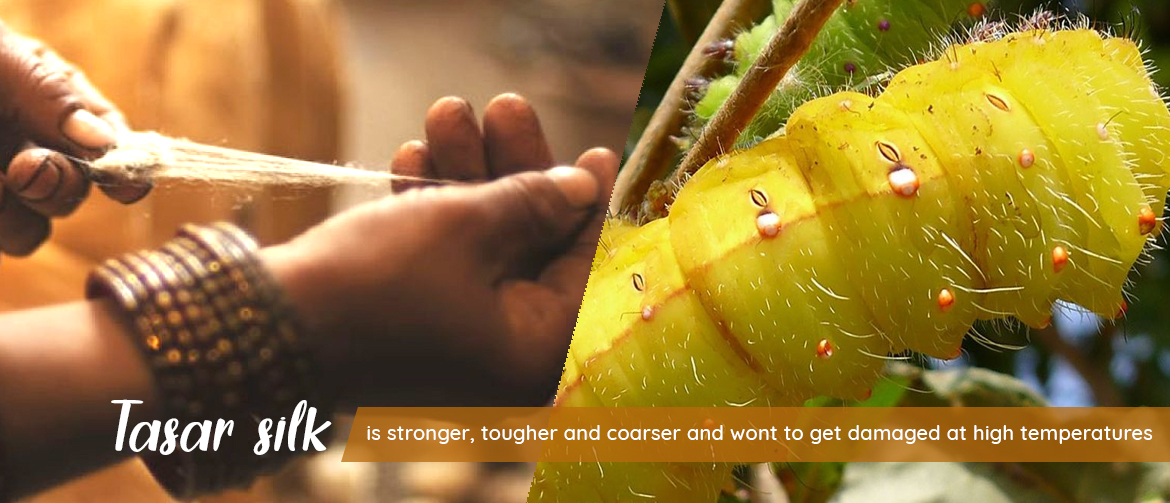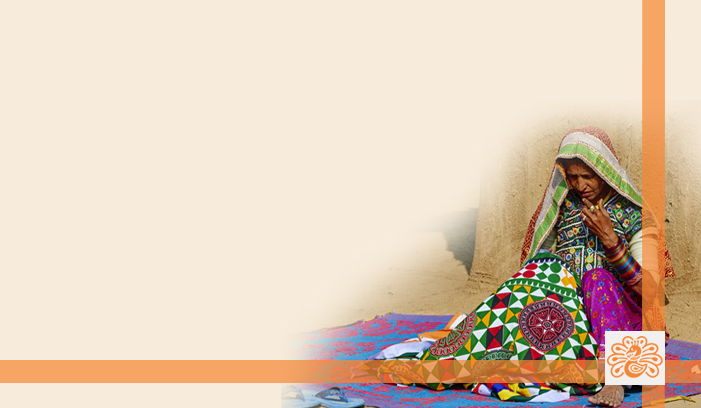- No products in the cart.

01
Jan
When you heard the word Tassar ghicha silk , you must thought that what is that ? From where we get that?
So, this story must clarify everyone’s curiosity about Tassar n Ghicha silk.
The Tussar silk is often produced by the caterpillar of a wild silk moth genus Antheraea, including A. assamensis, A. mylitta etc Those are found in rain forests of Bihar, Jharkhand, Orissa, Chhatisgarh, Madhya Pradesh, Andhra Pradesh and Maharashtra. Unlike mulberry silkworms, these caterpillars are difficult to cultivate in captivity, so the cocoons are sometimes gathered from the wild forests in trees belonging to Terminalia. species and Shorea robusta as well as other food plants like jamun and oak found in South Asia, eating the leaves of the trees they live on. Tussar silk is valued for its rich texture and natural deep gold colour, and varieties are produced in many countries, including China India, Japan, and Sri Lanka.
In order to kill the silkworms, the cocoons are dried in the sun. A variation of the process exists in which the silkworms are allowed to leave before the cocoons are soaked in boiling water to soften the silk and then reeled. Single-shelled, oval-shaped cocoons are collected and then boiled to extract the silk yarn. Boiling is a very important part in the manufacturing of silk, as it softens the cocoon and makes the extraction of silk easier.
However, it is not commercially viable to collect Tussar silk cocoons from jungles. Jungle Ghicha silk and Kosa silk (mainly produced in Chattisgarh from a worm similar to silkworm) are sales gimmicks. Ghicha or Khewa are the names given to yarns that are not dyed when Tussar silk is reeled.
Ghicha silk actually is the by-product of Tussar silk. The yarns of Ghicha silk are obtained from the cocoons of Tussar Silk. As per that conventional sayings, Ghicha threads are the undyed leftovers of pure Tussar silk threads which are processed for dying. Hence, the Ghicha silk threads are natural and it offers the natural texture and an exceptional sensational weaving.
India is the second largest producer of tussar silk and the exclusive producer of Indian tussar (also known as tropical tussar), which is largely tended to by tribals. Much of it is produced in Bhagalpur (where it is called Bhagalpur silk), Bihar and Malda district of West Bengal. Tussar silk is also used for Orissa’s Pattachitras, Jaipur’s laheria and West Bengal’s kantha stitches. Chhattisgarh and Madhya Pradesh also produce tussar silk. In recent years, the state of Jharkhand has emerged as the biggest producer of tussar silk.
The finest texture of Silk springing out from the essence of nature and known as the ‘Queen of all fabrics’, Bhagalpuri Silk is very well known for its unique and striking resilience and superior quality. This intrinsic artwork showcases the original essence of Bhagalpur in its purest and flawless form.
The tussar silk weaving industry in Bhagalpur, more than a century old, has about 30,000 handloom weavers working on some 25,000 handlooms.
The saree is the most important tussar silk product. although it is also used as the base material for handicrafts, furnishing fabrics, and stitched apparel.
ITS A SINGLE PIECE OF MAGICAL FABRIC THAT INCARNATES BEAUTY, BRILLIANCE, BENEVOLENCE, GRACE, AND ELEGANCE.
A saree that mingles style and comfort, a saree that enriches tradition and trend, is all time favorite of mine.
Recent Posts
15Jan
01Jan


Leave a reply
You must be logged in to post a comment.